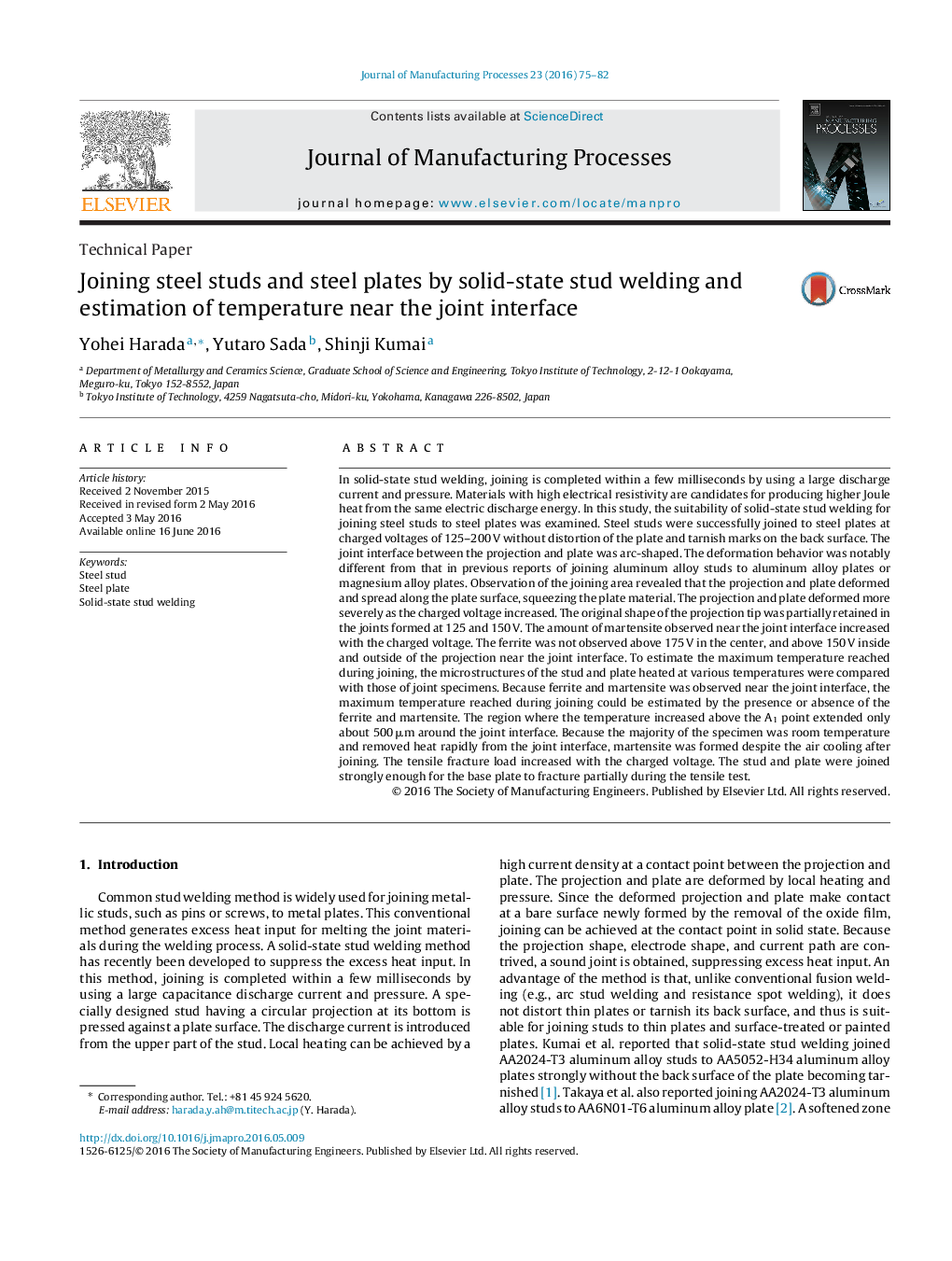| کد مقاله | کد نشریه | سال انتشار | مقاله انگلیسی | نسخه تمام متن |
|---|---|---|---|---|
| 1696846 | 1519233 | 2016 | 8 صفحه PDF | دانلود رایگان |
عنوان انگلیسی مقاله ISI
Joining steel studs and steel plates by solid-state stud welding and estimation of temperature near the joint interface
ترجمه فارسی عنوان
پیوستن به ستون های فولادی و ورق های فولادی توسط جوشکاری گل میخ شده در حالت جامد و برآورد دما در نزدیکی رابط مشترک
دانلود مقاله + سفارش ترجمه
دانلود مقاله ISI انگلیسی
رایگان برای ایرانیان
کلمات کلیدی
گل میخ فولاد، بشقاب استیل، جوشکاری گل میخک حالت جامد،
موضوعات مرتبط
مهندسی و علوم پایه
سایر رشته های مهندسی
مهندسی صنعتی و تولید
چکیده انگلیسی
In solid-state stud welding, joining is completed within a few milliseconds by using a large discharge current and pressure. Materials with high electrical resistivity are candidates for producing higher Joule heat from the same electric discharge energy. In this study, the suitability of solid-state stud welding for joining steel studs to steel plates was examined. Steel studs were successfully joined to steel plates at charged voltages of 125-200 V without distortion of the plate and tarnish marks on the back surface. The joint interface between the projection and plate was arc-shaped. The deformation behavior was notably different from that in previous reports of joining aluminum alloy studs to aluminum alloy plates or magnesium alloy plates. Observation of the joining area revealed that the projection and plate deformed and spread along the plate surface, squeezing the plate material. The projection and plate deformed more severely as the charged voltage increased. The original shape of the projection tip was partially retained in the joints formed at 125 and 150 V. The amount of martensite observed near the joint interface increased with the charged voltage. The ferrite was not observed above 175 V in the center, and above 150 V inside and outside of the projection near the joint interface. To estimate the maximum temperature reached during joining, the microstructures of the stud and plate heated at various temperatures were compared with those of joint specimens. Because ferrite and martensite was observed near the joint interface, the maximum temperature reached during joining could be estimated by the presence or absence of the ferrite and martensite. The region where the temperature increased above the A1 point extended only about 500 μm around the joint interface. Because the majority of the specimen was room temperature and removed heat rapidly from the joint interface, martensite was formed despite the air cooling after joining. The tensile fracture load increased with the charged voltage. The stud and plate were joined strongly enough for the base plate to fracture partially during the tensile test.
ناشر
Database: Elsevier - ScienceDirect (ساینس دایرکت)
Journal: Journal of Manufacturing Processes - Volume 23, August 2016, Pages 75-82
Journal: Journal of Manufacturing Processes - Volume 23, August 2016, Pages 75-82
نویسندگان
Yohei Harada, Yutaro Sada, Shinji Kumai,
